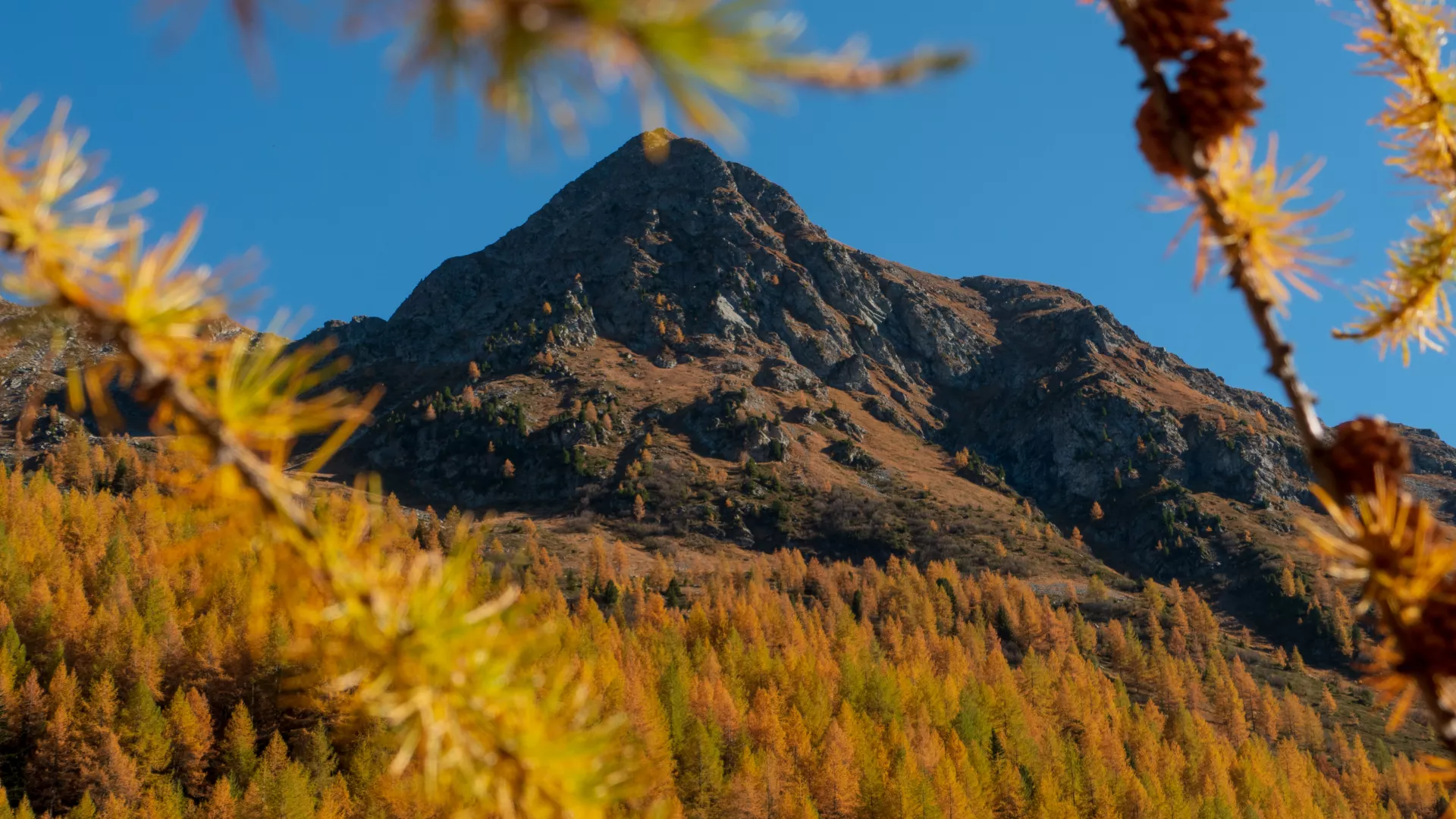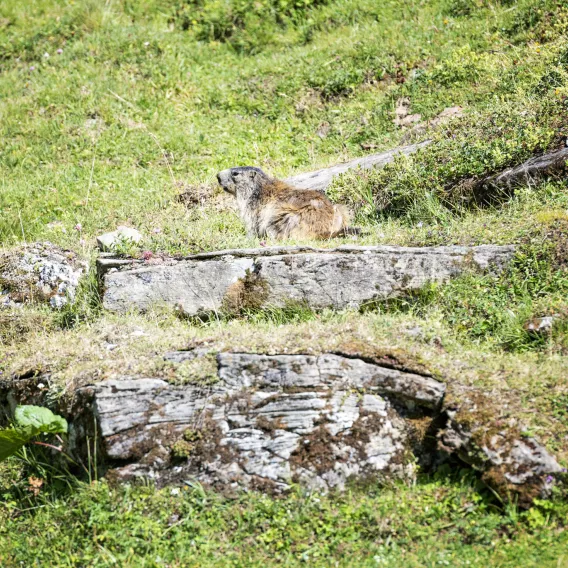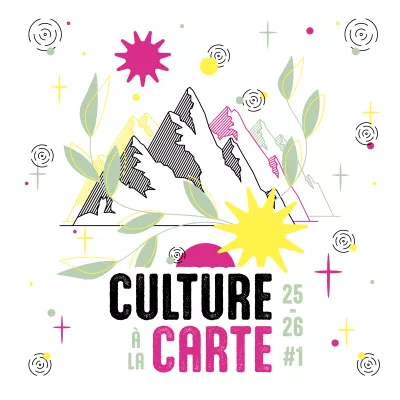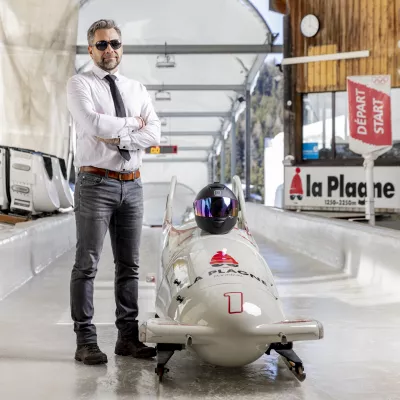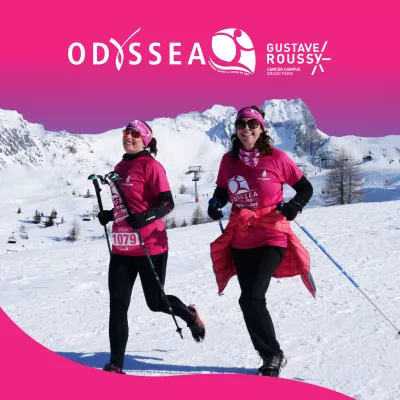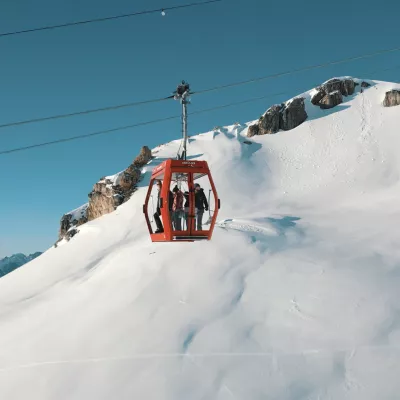Why is this important?
Our mountain sites are built in the heart of exceptional natural habitats ranging from the pastures of the Vanoise National Park in Champagny-en-Vanoise to La Chiaupe glacier. These areas are at the heart of our lives and rhythm our activities in winter and summer. This is why we know them, study them and measure their balance in detail.
Even when the resort was originally designed, the architects aimed at encroaching as little as possible on the space dedicated to skiing and its infrastructures, with the advantage of a limited footprint. They built high rather than spread out, building several sites to keep construction on a human scale.
Imagine… If our 55 000 beds were spread across individual chalets for 6 people, we would need no less than 9100 of them.
C’est quoi le jour du dépassement ?
Chaque année, le « Jour du dépassement de la Terre » est calculé par l’institut de recherche californien Global Footprint Network. Ce Jour du dépassement désigne le jour à partir duquel l’humanité a dépensé l'ensemble des ressources renouvelables que la Terre est capable de régénérer en un an.
Positionné au niveau mondial le 28 juillet, cela signifie qu'il faudrait 1,75 Terre, selon l’Organisation Non Gouvernementale WWF, pour tenir le rythme de notre consommation actuelle de ressources. Mais ce jour cache d'énormes disparités d'un pays à l'autre. Ainsi en France, le jour du dépassement est le 5 mai, ce qui signifie que si toute l'humanité consommait autant de ressources qu'un Français, il faudrait 2,7 planètes comme la Terre pour subvenir à nos besoins, ce qui nous place dans le top vingt des plus gros consommateurs du monde.
Notre objectif commun est de faire reculer ce Jour du dépassement, pour permettre à la Terre de régénérer ce que l'on prélève et ainsi desserrer l’étau autour des ressources. Pour cela, notre économie doit se transformer en réduisant la production de biens, et doit devenir massivement circulaire, pour extraire moins de ressources et valoriser au maximum celles qui sont déjà extraites.
The fragile balance between human activities, intense at times, and the life of the natural areas and their non-human inhabitants, is one of our main preoccupations. On a daily basis, we work with many players who frame our projects, help us to improve and offer us their expertise: impact studies for our development files, authorisations for land clearing or water withdrawals issued by the environmental authorities, actions to rehabilitate certain habitats such as wetlands, species protection, etc.
Our first steps
Maintaining a high level of biodiversity
La Plagne’s Environmental Observatory was created in 2014 and is managed by the environmental consultancy Karum. Observing the fauna and flora and monitoring the landscape offers us a better understanding of environmental sensitivities. The perimeter studied corresponds to the area of activity of the ski area.
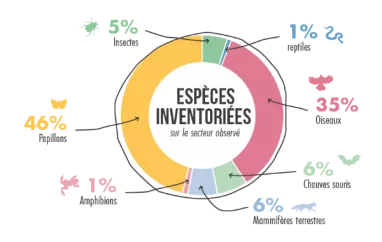
The European common frog is very present in the ski area. Listed since 2014, they represent 108 out of 110 observations of amphibians made in the ski area. In 2020, adults, young frogs and tadpoles were observed in 2 new wetlands below Les Inversens tunnel and above Les Blanchets lake. The species is observed up to an altitude of 2750 m in the ski area, below La Chiaupe glacier.
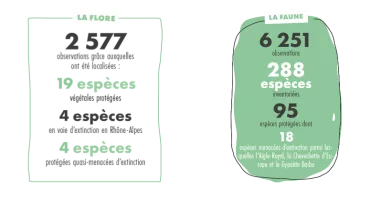
Preserving the wetlands
With their particularly rich biodiversity, wetlands are environments with high environmental stakes. They also play a crucial role in the water cycle, allowing water to be "buffered" on the same principle as a sponge. When there is not enough water, they release it. When there is too much, they absorb it. This is the case of the wetland on Carella plateau, which fulfils this role: the land is water-soaked when the snow melts or during rainstorms, reducing the risk of the stream overflowing. In drier periods, like in the summer of 2022, the wetland helps to feed the stream by releasing water.
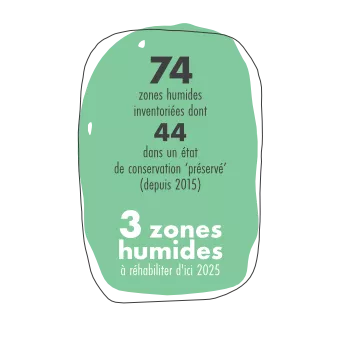
Re-vegetating the soil
For many years, the La Plagne ski area management company has been working to re-vegetate the land covered by its infrastructures to mitigate their impact on the natural environment, meadows and moorlands.
Since 2010, they have been using the technique of étrépage to keep the soil’s structure, the fungi, bacteria and vegetation in place. This practice consists of removing the surface layer (clods of soil and vegetation) to put it on another site. It is a slightly more time-consuming and costly process, but it preserves the original vegetation and improves the chances of recovery.
Since 2020, the management company has been sourcing seeds from the "Végétal Local" label, which offers mixtures containing 20% to 25% local plant seeds. It is also participating in a number of research programmes on the subject, in particular by making test areas available in the ski area. The seed company Phytosem, with which it has been working since 2014, mainly offers 2 mixes for "above 2000 m altitude" and "below 2000 m altitude". These seed mixes are adapted to La Plagne’s terrain and they are refined after visits to the sowing sites every year, ensuring that all the plant species on the site are maintained.
Living, working and growing close to a nature park
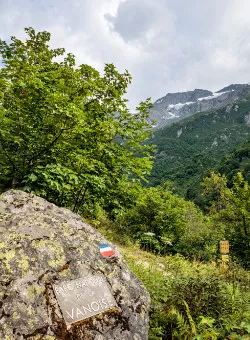
Part of La Plagne’s mountain area is in the Vanoise National Park. The park was created in 1963 because of the decreasing numbers of ibex, and is France’s oldest national park. It offers a majestic area across the Maurienne and Tarentaise valleys, protecting a carefully preserved fauna and flora. Created to protect nature, the Park’s main mission today is to safeguard its landscapes, the diversity of its plant and animal species and its cultural heritage.
The Champagny-le-Haut valley in the commune of Champagny-en-Vanoise is one of the gateways to the Vanoise National Park. It is a very popular site and presents strong challenges in terms of landscape, species and natural environments. The presence of large numbers of ibex, particularly in winter and spring, makes it an ideal place for monitoring the species. As part of the European Alcotra LEMED-IBEX programme on the Alpine ibex, the Vanoise National Park fitted some ibex with GPS collars so as to be able to better monitor their movements. The marked ibexes were given names by the Champagny-en-Vanoise schoolchildren who were able to follow them live via a website throughout the programme. 8 ibex were marked in 2019 (in the Pralognan sector) and 140 animals were monitored. This monitoring has enabled scientists to better identify the movements of the species and their habitat areas.
FOCUS: Plan des Gouilles – Laisonnay trail
Many trails go through the Vanoise National Park sentiers and are very popular with hikers in summer. They have to be maintained, remodelled or even created.
The aim of creating this trail: to open up access to Plan des Gouilles refuge by creating a practicable path.
Method used: consultation between the PNV (Parc National de la Vanoise), the CAF (Club Alpin Français, which manages the refuge concerned), the hunters and the commune to study several solutions.
Work: a narrow path (60 cm) to preserve the alpine spirit and limit the impact on the natural environment.
The work was carried out solely by hand, using shovels and pickaxes.
Helping our forests to adapt to climate change
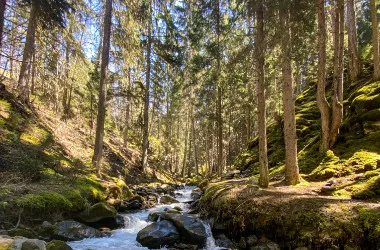
We know that the trees and forests in our regions are directly impacted by global warming: developing diseases such as the bark beetle, attacks by insects like the European spruce bark beetle which ravage spruce forests, increasingly frequent fires, and also by clear-cutting. In the commune of Champagny-en-Vanoise, a project in conjunction with the ONF (Office National des Forêts) and the village's primary school made it possible to plant some fifty new species in autumn 2022 on a plot of land that was once an affouage (a site where the locals could cut firewood): Scots pine, European larch and sycamore maple. These test species should enable our forests to adapt to these new threats better.

